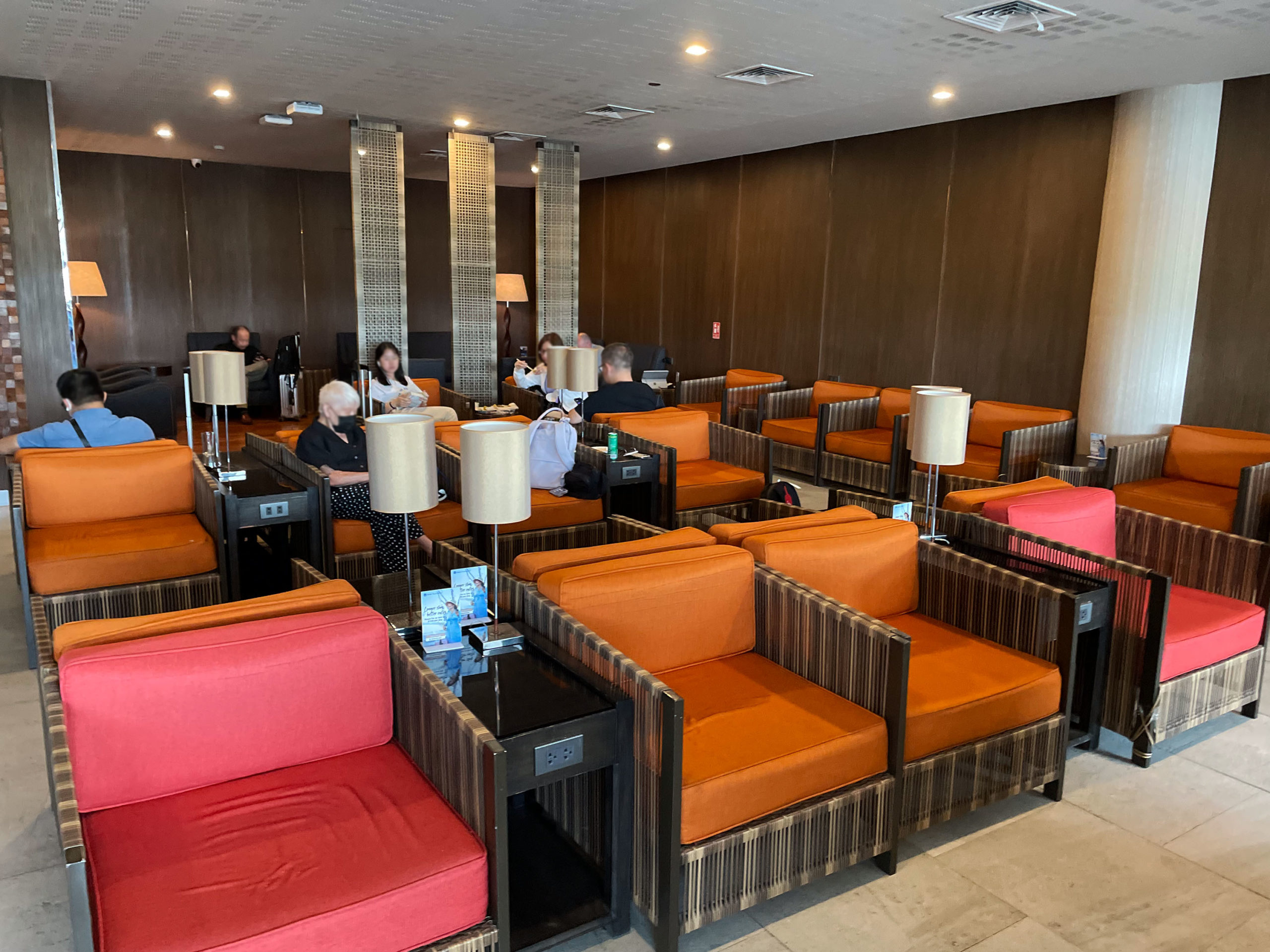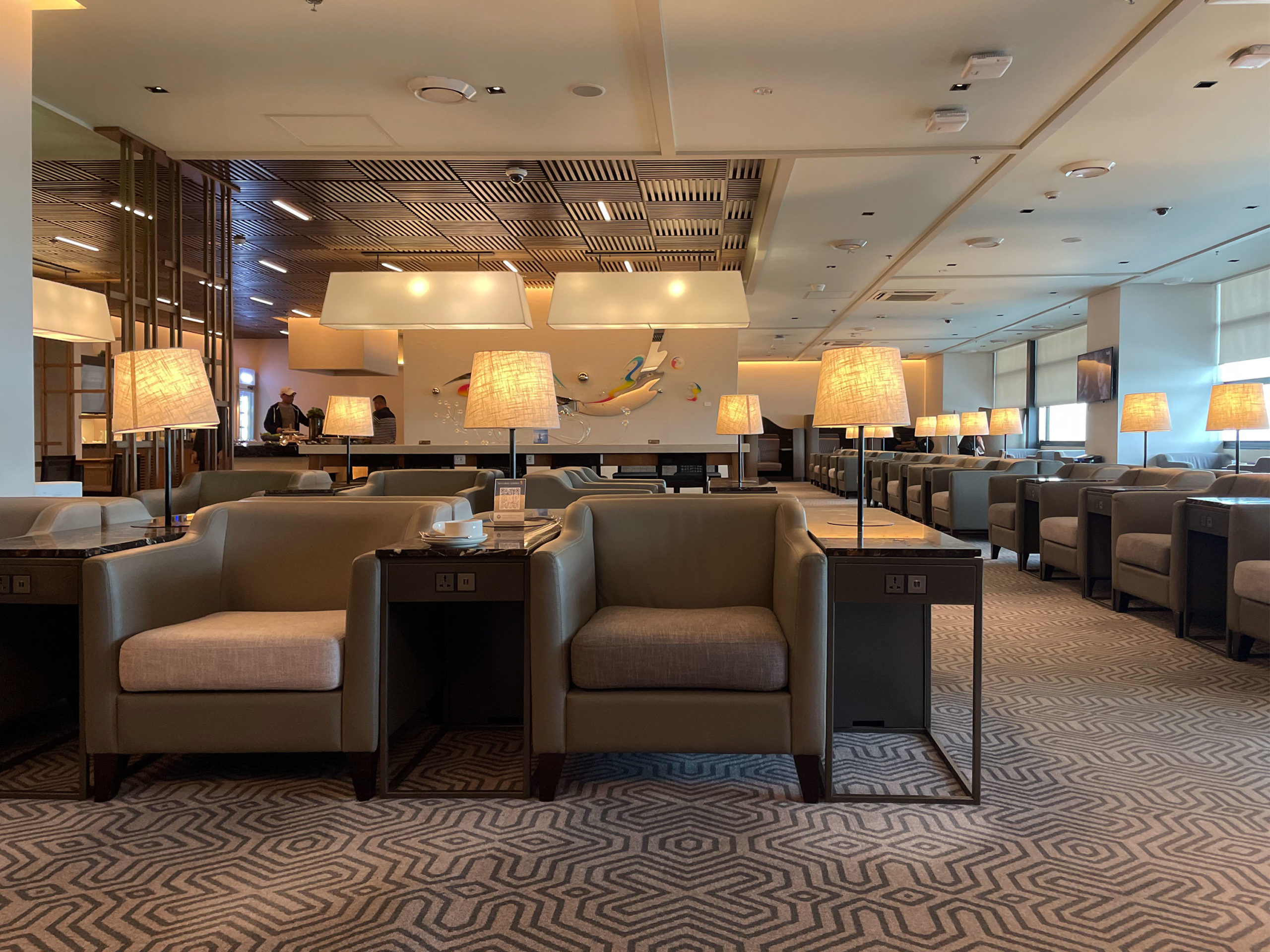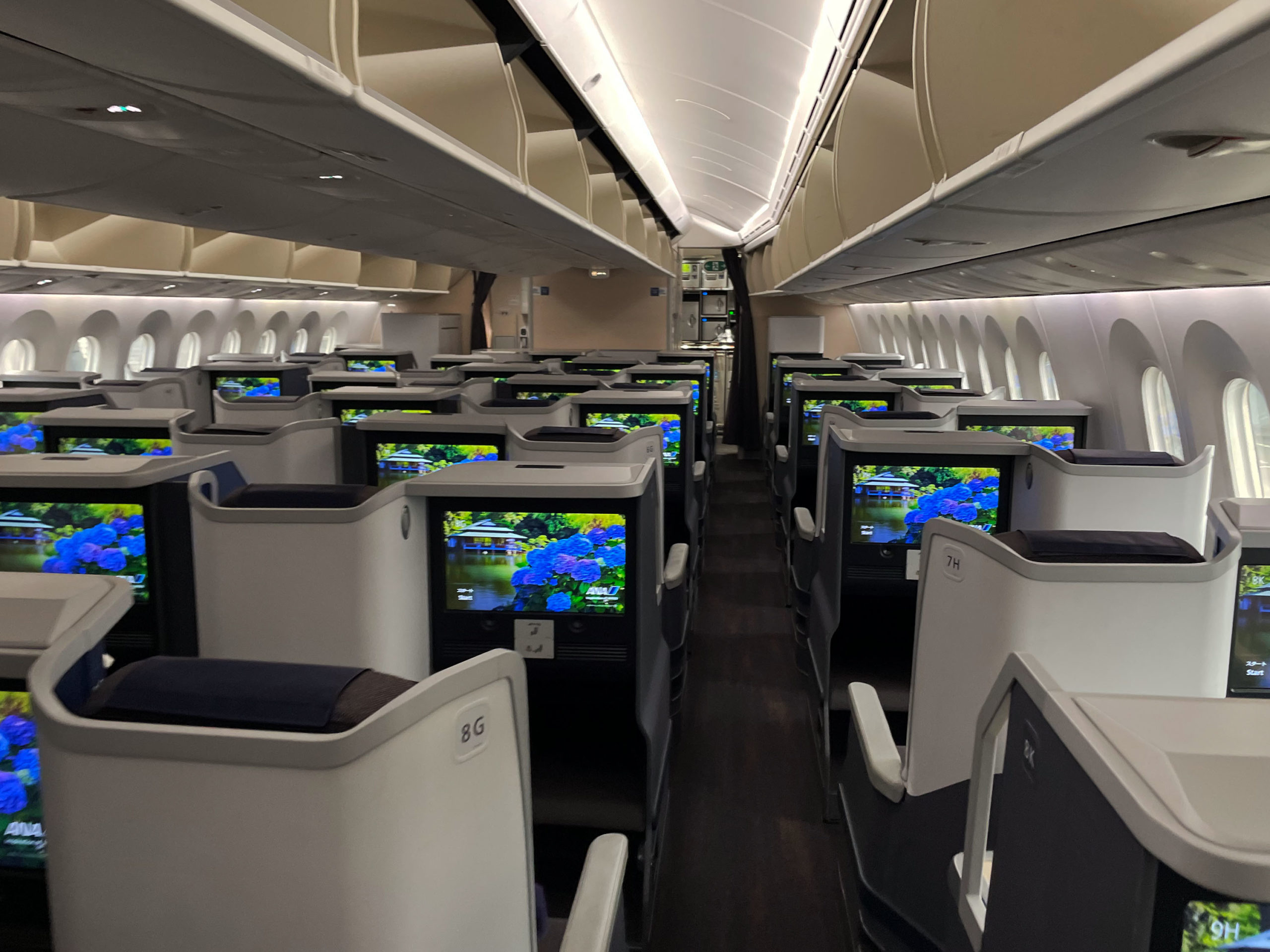
ANA flight details
Airline : ANA – All Nippon Airways
Flight No : NH820
Departure City : Manila – Ninoy Aquino (MNL)
Arrival City : Tokyo – Narita (NRT)
Equipment : Boeing 787-10 (JA901A)
Blocked Time : 4h40m
Seat No: 2K
ANA or All Nippon Airways is Japan’s largest carrier, operating a mixed fleet of Airbus A320s, A321s, A380s, Boeing 737s, 767s, 777s, and 787s. Founded in 1952 as a domestic carrier, the airline has since overtook flag carrier, Japan Airlines, in terms of size and destinations served. ANA’s operations are centred around the carrier’s two hubs in Tokyo – Haneda and Narita. Whilst Haneda is chiefly a domestic base for the airline, it is also a premium hub for select high-revenue international flights for ANA. This review constitutes the return portion of my trip flying ANA from Jakarta to Manila, this time via Narita.
Check-in
I arrived at Ninoy Aquino International Airport at 06.23, roughly 30 minutes after checking out from the New World Hotel Makati. At Ninoy Aquino International Airport, ANA departs from Terminal 3, shared with other international airlines like Cathay Pacific, Singapore Airlines, KLM, Qatar Airways, etc. Although NH820 is scheduled to depart within 3 hours at 09.10, the ANA check-in area was already occupied by a throng of people by this time.

Of this, the queues for Economy Class were long and snaked outside the designated lines. Thankfully, the situation was completely different in the Business Class queue, which had hardly any people. Since all of the Business Class counters were preoccupied when it was my turn, the agent at the Diamond Service line motioned for me to come over and check in there. Yay!

Curiously, the agent in Manila had no reaction whatsoever to my absurd itinerary, unlike that in Jakarta. After confirming my itinerary and tagging my checked luggage, she printed my boarding passes and issued me an invite to the PAGSS Lounge. As such, within three minutes of lining up, I had my boarding passes in hand and merrily headed to the immigration and security clearance to get to the lounge.

Lounge
Eligible passengers flying on ANA from Manila are issued lounge invites and directed to the PAGSS Premium Lounge by default. This is also the case with most other foreign airlines since the PAGSS Premium Lounge is also the primary contract lounge at the airport. I’ve written about the PAGSS Premium Lounge in a previous instalment and found it to be underwhelming.

Thankfully, however, Terminal 3 is also home to the Singapore Airlines SilverKris Lounge, which is part of the Star Alliance Lounge scheme. As such, ANA First and Business Class passengers, as well as frequent flyers with an elite status equivalent to Star Alliance Gold can alternatively use this lounge. Despite not being great in the grand scheme of things, the SilverKris Lounge is aeons ahead of the PAGSS Premium Lounge in terms of comfort and design.

Boarding
After spending virtually all the time I had between the SilverKris Lounge and the PAGSS Lounge, I headed to Gate 111 at 08.15, fifteen minutes before the advised boarding time. As had been the case on my Cathay Pacific flight to Hong Kong, there was similarly an exclusive entrance channel allowing one to bypass the narrow boarding lounge and go straight to boarding. In this, case the line is open only to ANA Diamond Service members, making me ineligible.

As I waited for boarding to start, I took this chance to take a peek out the windows. Parked next to JA901A, the ANA Boeing 787-10 taking us to Narita, is a Cathay Pacific Airbus A330-300, the same aircraft type I flew on the day prior.


Given how small the gate was and how full the flight was, I struggled to find an empty seat in the boarding lounge. Thankfully, the flight started preboarding about ten minutes after I got there, meaning that I didn’t have to sit on the floors for too long ;). Ten minutes following that, general boarding finally started at 08.42. Boy, am I eager to get on board!

ANA Boeing 787-10 Cabin
Our flight today is operated by a Boeing 787-10, which is the first time I’ve flown on this type! The Boeing 787-10 is the longest of its type, with a passenger capacity comparable to an entry-level Boeing 777. Judging by the aircraft’s recent roster, it looks like the type is dedicated to high-density, lower-yield routes in Southeast Asia. As such, it is no surprise to see that this plane has 292 seats, which is much more than you’d typically see on premium-heavy Japanese airline cabins.
Business Class
The Business Class cabin runs between doors 1 and 2, with 10 rows of the ANA’s most common Business Class seat. In this cabin, there are a total of 38 seats, featuring the ANA Staggered Business Class seat in a 1-2-1 configuration. Although the seats share identical bones with those on the Boeing 787-9, the cabin on the Boeing 787-10 features ANA’s latest design style and upholstery. Gone are the overwhelmingly blue cabins typically found on ANA jets. In its place is a more refined look, featuring dark and grey tones similar to those on ANA’s The Room-equipped Boeing 777s.


As hinted by the seat’s name, the staggered arrangement means that the seats alternate between those closer to the aisle and those shielded from the aisle by the side table. Since the seats closer to the aisle do not feature any meaningful benefit, I would recommend selecting those away from the aisle. This way, you wouldn’t be disturbed as easily by the foot traffic from people passing by.



Much like on the Boeing 787-9, ANA has opted not to feature any ‘honeymoon seats’ in the centre section, which are two seats that are placed very close to each other. As such, the centre section seats are more or less identical to those on the side. Given the large privacy screen between the centre seats, I wouldn’t recommend these seats for couples, since it is difficult to talk to each other, anyway.
Seat details
Despite the different finishes, the seat layout is more or less identical to the other ANA Staggered Business Class seats. As such, I’ll just rehash the details from my previous review. First, there is a fixed ottoman right under the personal monitor, which is standard with these staggered seats. When reclined, the seat joins with this ottoman into a bed. The space under the ottoman is hollow, making it ideal for storing shoes and small bags in flight.


On the side of the seat is a small table large enough for a laptop. Attached to the seat wall is a fixed literature pocket, with a built-in hook for the provided headphones. The seat recline controls are located on the side of the table, slightly on top of the armrest. Thoughtfully, this was placed high enough to prevent accidental pushes of the buttons. There is also a Do Not Disturb button, which lights up the seat’s Do Not Disturb sign for the crew to see.

Right under the seat controls is the sturdy tray table, released by a small lever, large enough to accommodate a laptop. The seat is complemented by a similar 18-inch screen to its predecessor, although with a higher definition and more intuitive monitor. There is also a coat hook next to the screen, embedded into the seat wall.

The high-definition monitor is controlled either through the touch screen or by the remote control on the side of the seat. Located in the same area is also a personal reading light, in addition to a USB-A port, the headphone jack outlet, and a universal power outlet.

Seat storage
Just like the previous generation of these seats, an enclosed storage space in the seat is frustratingly not available. This makes it hard to store loose items during taxi, takeoff, and landing, during which time the side table has to be cleared. Perhaps they could at least add a shallow cabinet under the monitor, as you’d find on Malaysia Airlines’ staggered seats.
Bed mode
As you’d expect from the Business Class product from any self-respecting airline nowadays, the seats can be reclined into a fully flat bed. In particular, ANA’s recline controls were very simple, allowing the seat to be converted with the touch of one clearly marked button. As it reclines, the seat slides forward and joins the ottoman in front.


In bed mode, there frankly isn’t any noticeable improvement compared to the last-generation seats. The boxed-in footwell remained constraining and the seat padding is still on the firm side. Again, it is comfortable to sleep on your back, but I couldn’t say the same when attempting to sleep on one’s side.
Amenities
As you’d expect on any Japanese airline, a packaged pair of slippers and a pair of headphones were already waiting on the seat at boarding. This is accompanied by a thick blanket alongside a firm pillow. For one, both the slippers and headphones were basic compared to the same offerings in Business Class on other leading airlines. I could safely say that Japan Airlines does better when it comes to this.

In particular, the collapsable Panasonic-branded headphones were underwhelming in the way that they felt cheap and flimsy. The flimsy four-star hotel-standard slippers weren’t much better, although I do appreciate that they came with a small pouch to take home.
Departure from Manila
Once I settled in my seat, the flight attendant on my aisle greeted me with a smile and introduced herself. After she offered to hang my jacket, she asked if I was heading ‘home’ to Tokyo after work. I replied that I was connecting to Jakarta, cueing an expression of shock on her face. Hah, definitely an unusual itinerary! After exchanging a few jokes, she asked about my meal preferences for lunch before excusing herself to continue preparing for departure. As the doors closed at 09.04, the purser went on the intercom to welcome us onboard this flight to Narita. This was followed by the pushback sequence three minutes later.


As we taxied to the runway, we passed by a few interesting planes, including a golden Cessna Citation Latitude private jet. At this time, the safety video was played. This was ANA’s latest safety video, which is informative and conventional, though nothing extraordinary. I would definitely have preferred had they kept the entertaining Kabuki safety video from a few years back:


As we taxied to Runway 24, the cabin lights were dimmed for takeoff. At 09.24, fourteen minutes after our scheduled departure time, we took off and ascended to the skies to Narita. We passed by Lufthansa Technik Philippines during our takeoff roll, which always has an impressive array of planes. A Lufthansa A380 was being serviced here, despite the fact that the airline does not usually fly to Manila.


Lunch Service
Nine minutes after takeoff, the seatbelt signs were turned off, prompting the crew to prepare for the lunch service. 15 minutes later, my tray table was set up with a tablecloth and the pre-meal aperitif was served. This time, I decided to order the ANA Original Kabosu Drink, which was exceptionally good. I also decided on the Western menu, since the Hamburger Steak sounded very appealing. For reference, the inflight food and drinks menu was as follows.



As usual, the aperitif service consisted of the pre-requested drink and a package of rice crackers. In addition to the Kabosu, I also got my usual glass of green tea. As most elements of the main meal are served on one tray, this was a creative way to lengthen the meal service on this daytime flight.

Western Meal
As was the case on my last flight, my Western meal was served on a single tray. This consisted of a starter, the main course, a salad, and an accompanying piece of bread. I didn’t expect much based on my previous experience, though I did think, ‘It’s a Hamburger Steak, it’s hard to mess up so how bad could it be?’ Well, you be the judge:

Before we get to that, the starter consisted of an imitation crab salad with pomelo, smoked chicken, and papaya salad. Whilst the pomelo was a nice addition, I wasn’t a big fan of the conflicting flavours of this starter. But that’s just me.

But the main course? Simply put, it looked atrocious… Even the bad main course of my last flight couldn’t prepare me for this. For one I wasn’t expecting bacon and garlic bits on the steak, which made it look very disconcerting. Even as I write this and look at the pictures, I still get goosebumps. The taste wasn’t much better… the meat was soggy and mushy and the questionable toppings gave it a very odd texture. As much as I’m sorry to say this, the dish was vile.

After the dreadful meal, I was really glad that they served Häagen-Dazs vanilla ice cream. Whilst I’d usually find this to be overly basic and uncreative, this tasted like heaven compared to the steak… I had another cup of green tea with this.

Inflight Entertainment
Since there were still two hours to go after completing my meal, I took time to look into the entertainment selection. The ANA SKY Channel system was expectedly identical to my last flight. To rehash, there was a choice of 110 films, 45 of which were recent releases. This was complemented by three live TV channels, which featured NHK, Sport 24, and CNN. A paid WiFi service was also available on this flight.


Frankly, I was already very impressed by the responsive and intuitive HD screen. But what impressed me more was its connectivity with personal devices. In this case, you browse the selection and save a list of favourite movies and shows on your phone, via the ANA app. On board, the system can be linked with the app, which synchronises the saved list. Better yet, you could even control the system on the app.

Lavatory
The ANA Boeing 787-10 is equipped with the airline’s standard lavatory offering. In Business Class, there are three lavatories for 38 passengers – two in the back and one by the flight deck. As is standard on the two major Japanese airlines, the toilet is thoughtfully equipped with a bidet. Much like the previous flights, toothbrushes, packets of mouthwash, and a Face & Body Sheet were available.

Service
Whilst the catering was undoubtedly bad, the service on this flight was conversely pretty great. The crew were warm and lighthearted and proactively offered drinks and top-ups. In addition to their friendliness, I also appreciated that they worked hard to ensure keep the lavatories clean throughout the flight. So I’d say that we definitely had a great crew, with service levels slightly nearer to those on JAL.
Arrival in Tokyo
Prompted by a ding from the flight deck, the purser announced the details of our descent and arrival 35 minutes before landing. By this point, I was surprised that the captain had not made any announcements; it stayed that way even after arrival. Anyways, she announced that we expected to land at Narita International Airport at 14.25, 25 minutes before our scheduled arrival time. 15 minutes before our estimated arrival time, the seatbelt signs were lit and the cabin was prepared for landing.

We landed at Tokyo Narita Airport at 14.21 local time, 29 minutes before our scheduled time of arrival. Impressively, our landing on Runway 16L was very smooth, so much so that I didn’t realise we touched down. As we taxied past Terminal 2 to our gate in Terminal 1, we passed a few interesting planes, including a Philippine Airlines Boeing 777-300ER and a Cebu Pacific A330-300. There was also a China Airlines A350, which I’ve previously reviewed in Business Class and Premium Economy.


Our arrival at Terminal 1 was signified by the myriad of ANA Boeing 787s parked along the terminal. We ended up pulling into our gate at 14.35, 11 minutes after landing. Parked next to us was an ANA Boeing 777-300ER, which is the airline’s flagship aircraft.



On arrival, the airline’s arrival video was played on the screens. The door was opened a couple of minutes later and I thanked the crew for the good service as I disembarked. Time to visit the ANA Lounge, it is!
Verdict
After this flight, I now know better not to order a Western meal on ANA. Apart from the really bad meal, I had a nice flight given the great entertainment and the good service. Perhaps if I ordered the Japanese meal, this might have been a near-perfect flight! Well, at least as perfect as it could be on ANA Business Class. Imaginably, the easiest way for the airline to improve is by rolling out its excellent The Room product across the fleet. Doing that would perhaps be their best bet at eclipsing JAL. But since that is highly unlikely, I can’t see myself regarding ANA as the best Japanese airline, at least in the near future.


Leave a Reply